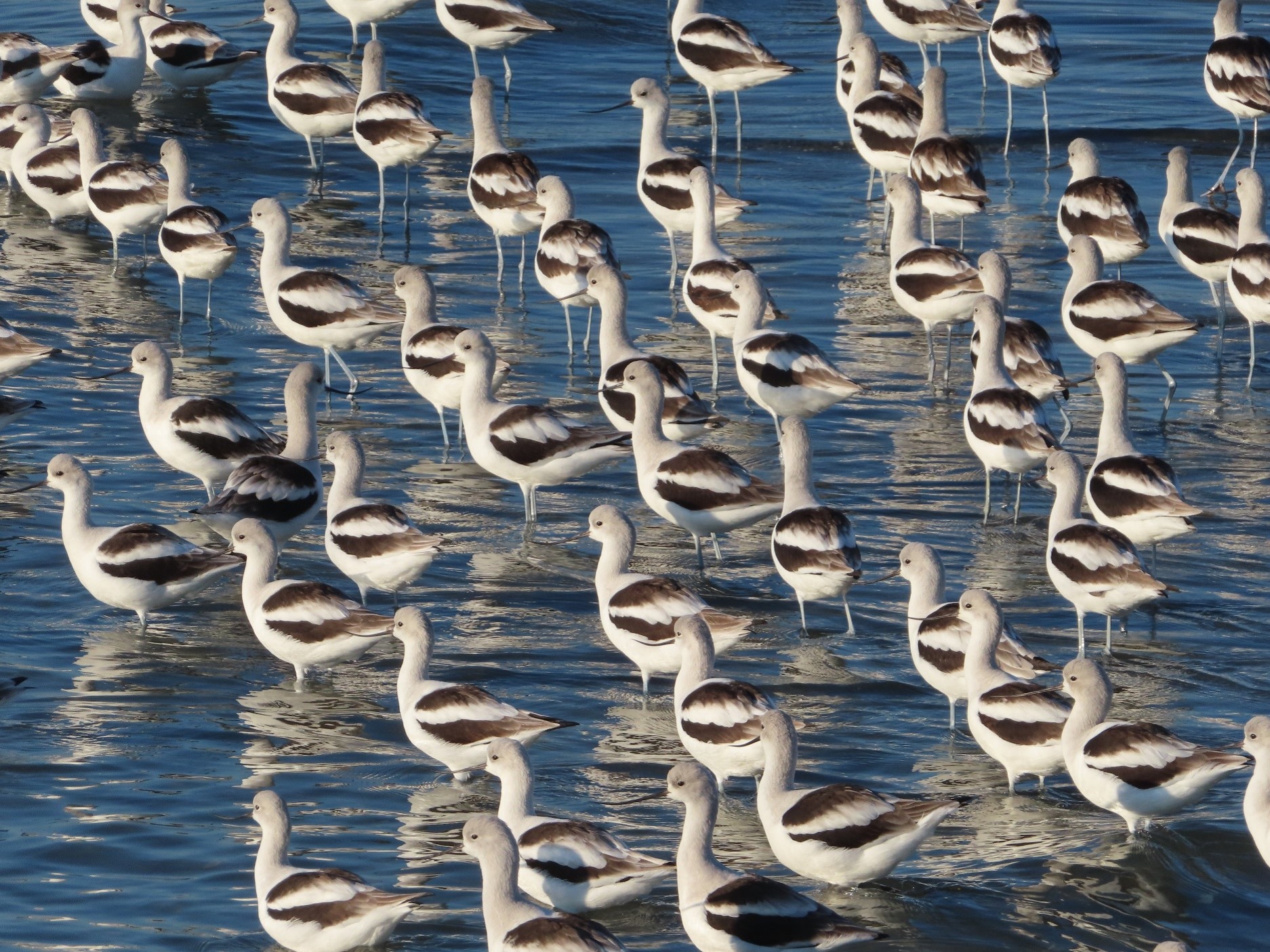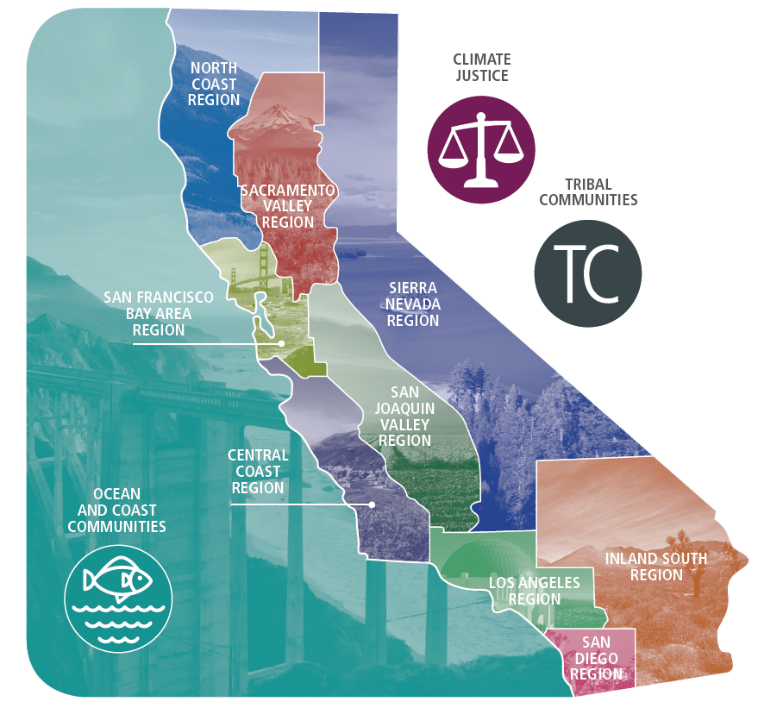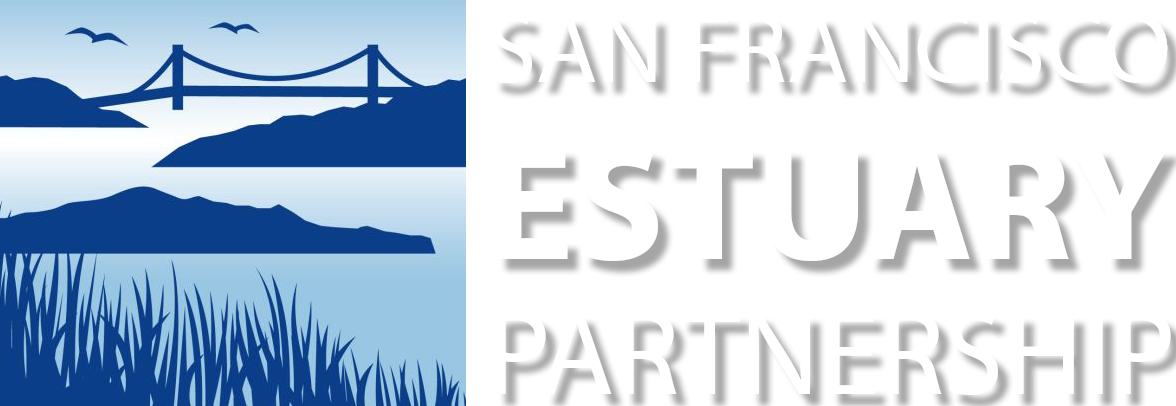
Our magazine’s media motto for many years has been “Where there’s an estuary, there’s a crowd.” The San Francisco Estuary is a place where people, wildlife, and commerce congregate, and where watersheds, rivers and the ocean meet and mix, creating a place of unusual diversity. In choosing to tell the Story of the Estuary in just nine major topics and a few browsing categories, so many unique stories from our archives have been missed. Like tales about the region’s various research vessels that collect data on conditions in the water or trawl for fish of management concern. Or the stories bringing to life the experiences of people swimming or fishing or boating on the water, or walking the trails and watching the birds on our shores. Central to so many of our stories are also the people working on the frontiers of estuary management, and our archives also include profiles, memorials, Q & As and podcasts like this one about efforts to embrace equity in resource management. And then there are just the fascinating specifics about a particular place (a dam, a levee, a floodplain), a particular group or agency or a time when something really important happened like Measure AA. More treasures can be found by scrolling down to Reporters Look Back on our archive home page (each of our legacy reporters chose their stand out stories). If you dig deep into our older archives, you’ll also unearth some tales of times past, all of which add up to the unique place and history that is the San Francisco Estuary. Photo: USGS
The moveable bridges that cross the rivers and sloughs in the Sacramento-San Joaquin Delta were built in the first half of the 20th century, and most are operated by control panels as old as the bridges themselves. A day spent touring these strong-boned grande dames on backwater levee roads…
The learned doctors attending the bedside of the Sacramento-San Joaquin River Delta agree on one thing: the patient is not doing well. What ails it, many students of the case suggest, is dehydration: the perennial artificial drought induced by withdrawals of water for human use. Recently, though, attention has turned to a comorbidity: malnutrition. Delta waters simply don’t generate enough basic food, in the form of phytoplankton, to sustain the food chains extending to salmon, sturgeon, and smelt.
How many ducks and geese used the Estuary before the Gold Rush? The numbers are beyond conjecture, but they must have been mind-boggling. Observers writing about a hundred years ago noted major decreases during the era of market hunting, when waterfowl were shot to supply the restaurants and stores of California’s emerging cities, but offered […]
Watching Bay-Delta science unfold, we take for granted the little armada that keeps it all going. Nobody has a firm count, but it appears there are about 100 vessels supporting research in the Estuary. They range from a few large craft that can work outside the Golden Gate to little “trailerable” skiffs and Adirondack rowboats that ply Delta shallows. Like many of the systems that quietly sustain our society, this one is showing signs of strain.
This winter, Jay Carlisle, director of the Intermountain Bird Observatory, teaming with Nils Warnock of Audubon Canyon Ranch and netting expert David Newstead of Coastal Bend Bays and Estuaries Program, caught two long-billed curlews and outfitted them with transmitters. Those birds may reveal where the wintering curlews on the California coast and Bayshore are coming from.“It’s such a habitat generalist that adapts well to humans,” Carlisle notes…
Pete has fished San Francisco Bay for nearly all of his 60 years. A lifelong San Francisco resident who keeps his last name to himself, he recalls herring runs in the 1970s the likes of which rarely, if ever, occur anymore. “I remember herring spawns that went from Oyster Point all the way to the […]
A small group of friends are walking the entire San Francisco Bay Trail by tackling one segment at a time, in order, once a month. After two years, they have covered more than half the trail, both the finished, and as best they can, the unfinished portions.
Jim Cloern looked out of an airplane window one day and saw red streaks in the water; crimson patches darkening the grey-green shallows that are San Francisco’s South Bay. A superscientist with the US Geological Survey, he knew something big was happening. The color indicated a red tide, a harmful algal bloom…
When Mari Rose Taruc approached California environmental justice (EJ) leaders about advising the California State Lands Commission on its EJ policy, they didn’t know what she was talking about. “They were like, what does the State Lands Commission do?” recalls Taruc with a chuckle. A two-way discovery has since taken place between the agency and the resulting EJ group. The discovery is significant because State Lands wields bureaucratic power often out of reach of small EJ groups. As Taruc quips, it is “the state’s biggest landlord.”
Near the end of 2012, the US Army Corps of Engineers released 28,000 acre-feet of water from Lake Mendocino. Then followed 14 of the driest months on record. The key to managing the drought and deluge cycle of California lies in a better understanding of atmospheric rivers, intense winter storms that transport water from the tropics to the West Coast. Over the last decade California has pumped more than $40 million into the statewide network that tracks these rivers, giving lead times of up to a week.
When Bay Area voters approved Measure AA in June 2016 they not only created a significant new source of environmental funding, they also made California history, levying a parcel tax across the entire region for the first time. The measure, which resulted in creation of the SF Bay Restoration Authority, may be a catalyst for a regional approach to wetland restoration, rising sea levels and other challenges.
Side by side at a Redwood City marina, two vessels await their very different destinies. The Research Vessel Polaris, a classy 96-foot yacht, spent decades as the workhorse of the US Geological Survey’s San Francisco Bay science program. Her successor floats next to her in the Redwood City marina, a 67-foot aluminum catamaran named RV David H Peterson for the late oceanographer.
Whatever the “perturbation” coming our way – a flood, a drought, a weed or Donald Trump – our recovery, in the aftermath, depends on something ecologists call resilience. It’s a term everyone is pasting onto their management initiatives these days. But what exactly does it mean?
The Kaiser Permanente Cement Plant (named after nearby Permanente Creek) produced six million barrels of cement to build Shasta Dam, and countless roads, buildings, and bridges. Now known as Lehigh Southwest Cement Company, the quarry and plant still supplies 50% of the Bay Area’s Portland cement, and recently earned some intense scrutiny from local regulators.
In recent years, Estuary News produced a number of special issues dedicated to central topics ranging from fish to restoration to Delta science and climate adaptation. These issues come together especially beautifully in PDF formats, where the relationships between stories and silos begin to emerge.
Walk back through time with this selection of early stories from Estuary’s first two decades of publication. Stories cover everything from regulating habitat to Sierra watershed management to SF Bay mud math and the San Luis Drain.
By Ariel Rubissow Okamoto

Nothing could be stranger than sitting in the dark with thousands of suits and heels, watching a parade of promises to decarbonize from companies and countries large and small, reeling from the beauties of big screen rainforests and indigenous necklaces, and getting all choked up.
It was day two of the September 2018 Global Climate Action Summit in San Francisco when I felt it.
At first I wondered if I was simply starstruck. Most of us labor away trying to fix one small corner of the planet or another without seeing the likes of Harrison Ford, Al Gore, Michael Bloomberg, Van Jones, Jerry Brown – or the ministers or mayors of dozens of cities and countries – in person, on stage and at times angry enough to spit. And between these luminaries a steady stream of CEOs, corporate sustainability officers, and pension fund managers promising percentages of renewables and profits in their portfolios dedicated to the climate cause by 2020-2050.
I tried to give every speaker my full attention: the young man of Vuntut Gwichin heritage from the edge of the Yukon’s Arctic National Wildlife Refuge who pleaded with us not to enter his sacred lands with our drills and dependencies; all the women – swathed in bright patterns and head-scarfs – who kept punching their hearts. “My uncle in Uganda would take 129 years to emit the same amount of carbon as an American would in one year,” said Oxfam’s Winnie Byanyima.
“Our janitors are shutting off the lights you leave on,” said Aida Cardenas, speaking about the frontline workers she trains, mostly immigrants, who are excited to be part of climate change solutions in their new country.
The men on the stage, strutting about in feathers and pinstripes, spoke of hopes and dreams, money and power. “The notion that you can either do good or do well is a myth we have to collectively bust,” said New Jersey Governor Phil Murphy whose state is investing heavily in offshore wind farms.
“Climate change isn’t just about risks, it’s about opportunities,” said Blackrock sustainable investment manager Brian Deese.
But it wasn’t all these fine speeches that started the butterflies. Halfway through the second day of testimonials, it was a slight white-haired woman wrapped in an azure pashmina that pricked my tears. One minute she was on the silver screen with Alec Baldwin and the next she taking a seat on stage. She talked about trees. How trees can solve 30% of our carbon reduction problem. How we have to stop whacking them back in the Amazon and start planting them everywhere else. I couldn’t help thinking of Dr. Seuss and his truffala trees. Jane Goodall, over 80, is as fierce as my Lorax. Or my daughter’s Avatar.
Analyzing my take home feeling from the event I realized it wasn’t the usual fear – killer storms, tidal waves, no food for my kids to eat on a half-baked planet – nor a newfound sense of hope – I’ve always thought nature will get along just fine without us. What I felt was relief. People were actually doing something. Doing a lot. And there was so much more we could do.
As we all pumped fists in the dark, as the presentations went on and on and on because so many people and businesses and countries wanted to STEP UP, I realized how swayed I had let myself be by the doomsday news mill.
“We must be like the river, “ said a boy from Bangladesh named Risalat Khan, who had noticed our Sierra watersheds from the plane. “We must cut through the mountain of obstacles. Let’s be the river!”
Or as Harrison Ford less poetically put it: “Let’s turn off our phones and roll up our sleeves and kick this monster’s ass.”
by Isaac Pearlman
Since California’s last state-led climate change assessment in 2012, the Golden State has experienced a litany of natural disasters. This includes four years of severe drought from 2012 to 2016, an almost non-existent Sierra Nevada snowpack in 2014-2015 costing $2.1 billion in economic losses, widespread Bay Area flooding from winter 2017 storms, and extremely large and damaging wildfires culminating with this year’s Mendocino Complex fire achieving the dubious distinction of the largest in state history. California’s most recent climate assessment, released August 27th, predicts that for the state and the Bay Area, we can expect even more in the future.
The California state government first began assessing climate impacts formally in 2006, due to an executive order by Governor Schwarzenegger. California’s latest iteration and its fourth overall, includes a dizzying array of 44 technical reports; three topical studies on climate justice, tribal and indigenous communities, and the coast and ocean; as well as nine region-specific analyses.
 The results are alarming for our state’s future: an estimated four to five feet of sea level rise and loss of one to two-thirds of Southern California beaches by 2100, a 50 percent increase in wildfires over 25,000 acres, stronger and longer heat waves, and infrastructure like airports, wastewater treatment plants, rail and roadways increasingly likely to suffer flooding.
The results are alarming for our state’s future: an estimated four to five feet of sea level rise and loss of one to two-thirds of Southern California beaches by 2100, a 50 percent increase in wildfires over 25,000 acres, stronger and longer heat waves, and infrastructure like airports, wastewater treatment plants, rail and roadways increasingly likely to suffer flooding.
For the first time, California’s latest assessment dives into climate consequences on a regional level. Academics representing nine California regions spearheaded research and summarized the best available science on the variable heat, rain, flooding and extreme event consequences for their areas. For example, the highest local rate of sea level rise in the state is at the rapidly subsiding Humboldt Bay. In San Diego county, the most biodiverse in all of California, preserving its many fragile and endangered species is an urgent priority. Francesca Hopkins from UC Riverside found that the highest rate of childhood asthma in the state isn’t an urban smog-filled city but in the Imperial Valley, where toxic dust from Salton Sea disaster chokes communities – and will only become worse as higher temperatures and less water due to climate change dry and brittle the area.
According to the Bay Area Regional Report, since 1950 the Bay Area has already increased in temperature by 1.7 degrees Fahrenheit and local sea level is eight inches higher than it was one hundred years ago. Future climate will render the Bay Area less suitable for our evergreen redwood and fir forests, and more favorable for tolerant chaparral shrub land. The region’s seven million people and $750 billion economy (almost one-third of California’s total) is predicted to be increasingly beset by more “boom and bust” irregular wet and very dry years, punctuated by increasingly intense and damaging storms.
Unsurprisingly, according to the report the Bay Area’s intensifying housing and equity problems have a multiplier affect with climate change. As Bay Area housing spreads further north, south, and inland the result is higher transportation and energy needs for those with the fewest resources available to afford them; and acute disparity in climate vulnerability across Bay Area communities and populations.
“All Californians will likely endure more illness and be at greater risk of early death because of climate change,” bluntly states the statewide summary brochure for California’s climate assessment. “[However] vulnerable populations that already experience the greatest adverse health impacts will be disproportionately affected.”
“We’re much better at being reactive to a disaster than planning ahead,” said UC Berkeley professor and contributing author David Ackerly at a California Adaptation Forum panel in Sacramento on August 27th. “And it is vulnerable communities that suffer from those disasters. How much human suffering has to happen before it triggers the next round of activity?”
The assessment’s data is publicly available online at “Cal-adapt,” where Californians can explore projected impacts for their neighborhoods, towns, and regions.

